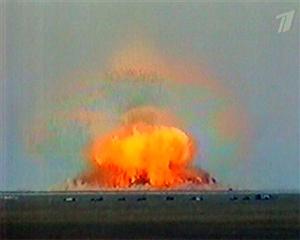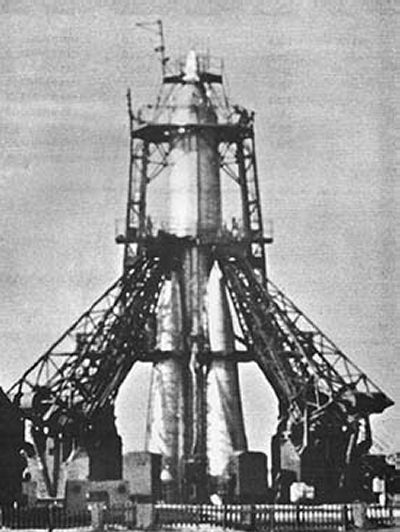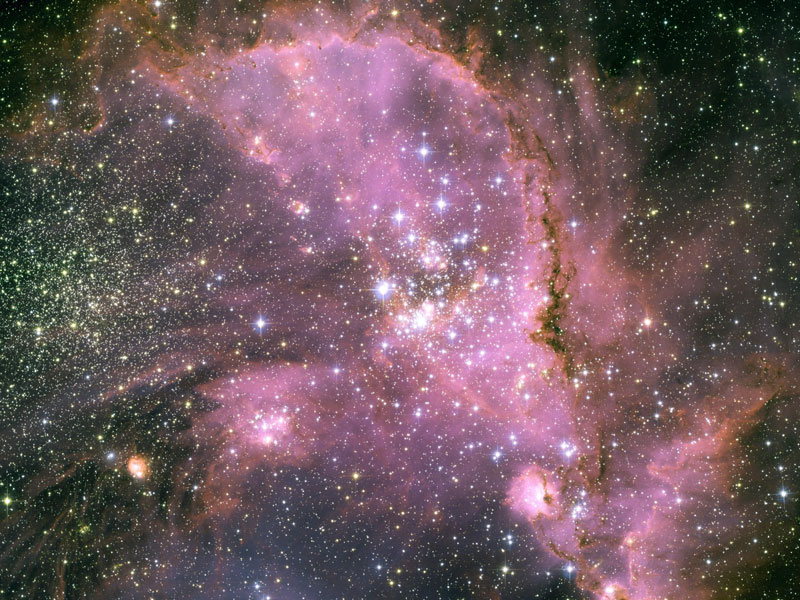Re: The Rise of the Russian Empire: Russo-Armenian Relations
Military related news from Russia.
*****************************

Russia is planning to increase its spending on defense by 50% in the next three years, a senior MP said Tuesday. Russia's defense budget is believed to be less than a tenth of the United States', but the country's military expenditure has been steadily growing in the past few years. "According to a draft federal budget for 2009-2011, expenditure on national defense will increase in 2009 by 25.7% from 1.02 trillion rubles ($40 billion) to 1.28 trillion rubles ($51.3 billion) and would account for 14% of total budget spending," said Viktor Zavarzin, chairman of the Defense Committee in Russia's lower house of parliament. He also said that by 2011 the total defense expenditures would increase by 45.6% compared with 2008. A large portion of additional expenditures would go toward raising salaries and improving the living conditions of military personnel, he added. Russia is soon to adopt a new military doctrine that aims to transform the Armed Forces into a mobile and effective military force. Their structures will be "optimized" through the use of combined arms units performing similar tasks. President Dmitry Medvedev said last week that Russia would make the modernization of its nuclear deterrent and Armed Forces a priority in the decade up to 2020. "We must ensure air superiority, precision strikes at land and sea targets, and timely deployment of troops," Medvedev said. "We are planning to launch large-scale production of warships, primarily, nuclear submarines with cruise missiles and multi-purpose attack submarines." Russia's Defense Ministry earlier said it would spend around 1 trillion rubles ($40 billion) of federal budget funds in 2008, 20% more than in 2007, and that in 2008-10 military spending would account for 15.5-16% of total federal budget spending.
Source: http://en.rian.ru/russia/20080930/117331145.html

The Russian Defense Ministry intends to form Rapid Reaction Forces in the nearest future. They will consist of paratroopers, marines and special forces, according to Interfax AVN, citing defense sources. The formation of the forces is one of the urgent measures for the improvement of the Russian Armed Forces and is intended for the timely resistance to potential threats in any strategic area. The Rapid Reaction Forces will use 200-300 attack and army planes and helicopters that are organizational part of the Air Force tactical group. The collegium of the Defense Ministry will meet in Moscow on October 3 to discuss the organization and size of the forces and military issues connected with them.
Source: http://www.kommersant.com/p-13320/Russian_armed_forces/

Russia and India will jointly develop two versions of a new fifth-generation fighter, the head of an Indian defense company said on Monday. A Russian-Indian advanced multirole fighter is being developed by Sukhoi, which is part of Russia's United Aircraft Corporation (UAC), along with India's Hindustan Aeronautics Limited (HAL), under an intergovernmental agreement signed in October 2007. "The aircraft will have different wings, electronics and radars," HAL Chairman Ashok K. Baweja said after a meeting of the Russian-Indian intergovernmental commission on military technical cooperation in New Delhi. He also said India will develop a two-seat version to meet the requirements of the Indian air superiority doctrine, while Russia will develop a single-seat fighter. Russia's Sukhoi aircraft maker earlier said it had started the construction of a prototype of the fifth-generation fighter, which will feature high maneuverability and stealth to ensure air superiority and precision in destroying ground and sea targets. The Russian version will be built at the Komsomolsk-on-Amur aircraft-manufacturing plant in Russia's Far East. Flight tests of the fifth-generation fighter will begin as early as 2009, and mass production of the aircraft may start by 2015, Sukhoi said. Russia's military cooperation with India goes back nearly half a century, and the country accounts for about 40% of Russian arms exports. Russian-Indian intergovernmental commission sessions are held annually and alternate between New Delhi and Moscow. The previous meeting took place in the Russian capital in October 2007.
Source: http://en.rian.ru/world/20080929/117251004.html

Syria, the United Arab Emirates, Malaysia and other states are interested in buying Russia’s Iskander-E tactical missile systems, Rosoboronexport Director at Large Nikolay Dimidyuk said, Interfax reported. “The demand has been noted in Syria. The Emirates takes much interest in it. Malaysia, India are interested in it very much,” Dimidyuk told reporters Wednesday. Other states are eyeing it as well, but off-the-record, the official added. Iskander-E has great export potential, Dimidyuk said. “This is truly a high-precision weapon. Missile defense systems can’t hit the Iskander missile,” the official specified, explaining that the missiles have a perplexed flying trajectory and are able to make anti-missile maneuvers, which prevents their hitting. Iskander can fire horizontally, which doesn’t unmask it, and has a number of other vital combat characteristics, Dimidyuk pointed out. Iskander is produced in two variants – Iskander-M for Russia’s Armed Forces and Iskander-E for the export to other countries. The export variant slightly differs from the systems made by order of the RF Defense Ministry. Iskander-E can hit targets at the range of up to 280km, striking two different targets at a minute interval. Its trajectory isn’t of ballistic nature and forecasting it would be very difficult for an enemy, the more so that the missile is controlled during all flight.
Source: http://www.kommersant.com/p-13322/Iskander-E_missile/
Russia's Sukhoi aircraft maker has started flight tests of the second Su-35 Flanker multirole fighter to expedite the completion of the testing program, the company said on Thursday. "The addition of the second aircraft to the testing program will speed up its completion and ensure the beginning of deliveries to our customers in 2011," Sukhoi said in a statement. The first Su-35 successfully completed its first 6-minute demonstration flight on July 7 and has made over 40 test flights since then. All of them confirmed superior technical and combat characteristics of the aircraft. The Su-35 fighter, powered by two 117S engines with thrust vectoring, combines high maneuverability and the capability to effectively engage several air targets simultaneously using both guided and unguided missiles and weapon systems. The aircraft features the new Irbis-E radar with a phased antenna array, which allows the pilot to detect and track up to 30 air targets, while simultaneously engaging up to eight targets. It is equipped with a 30-mm cannon with 150 rounds and can carry up to eight tons of combat payload on 12 external mounts. Sukhoi earlier said it plans to start deliveries of the new aircraft, billed as "4++ generation using fifth-generation technology," to the Russian Air Force and foreign clients in 2011 and produce Su-35s over a period of 10 years up to 2020. The company is planning to export at least 160 Su-35 fighters in the future to a number of countries, including India, Malaysia and Algeria.
Source: http://en.rian.ru/russia/20081002/117390757.html

Russian strategic bombers will conduct training flights with full combat payloads and live fire all cruise missiles on board for the first time in over two decades, an Air Force spokesman said. The live firing exercises in Russia's northern latitudes on October 6-12 are part of the Stability-2008 strategic maneuvers in various regions of Russia and Belarus with the goal of practicing strategic deployment of the Armed Forces, including the nuclear triad, to counter potential threats near the Russian border. "During these exercises, for the first time in many years, the crews of Tu-160 Blackjack and Tu-95MS Bear-H strategic bombers will fly missions carrying the maximum combat payload and fire all the cruise missiles on board," Lt. Col. Vladimir Drik said. Tu-95MS and Tu-160 aircraft can carry six and 12 Kh-55 (AS-15 Kent) long-range cruise missiles respectively. Drik said that the scope of the exercises would be unprecedented and involve, apart from the Tu-160s and Tu-95s, the Tu-22M3 Backfire strategic bombers, air superiority fighters, interceptors and aerial tankers. "The number and variety of aircraft involved in the drills shows the wide range of tasks that will be accomplished during the week-long exercise," the spokesman said. Former Air Force commander, General of the Army Pyotr Deynekin, said Russian Tu-95 bombers had conducted live firing of all their cruise missiles only once before, in 1984. "Tu-160 bombers have never done this because it is very expensive," the general said. According to various sources, in addition to 16 Tu-160 bombers the Russian Air Force currently has 40 Tu-95MS bombers and 141 Tu-22M3 bombers in service.
Source: http://en.rian.ru/russia/20081002/117389135.html
Military related news from Russia.
*****************************
Russia plans to raise defense expenditure by 50% in 3 years

Russia is planning to increase its spending on defense by 50% in the next three years, a senior MP said Tuesday. Russia's defense budget is believed to be less than a tenth of the United States', but the country's military expenditure has been steadily growing in the past few years. "According to a draft federal budget for 2009-2011, expenditure on national defense will increase in 2009 by 25.7% from 1.02 trillion rubles ($40 billion) to 1.28 trillion rubles ($51.3 billion) and would account for 14% of total budget spending," said Viktor Zavarzin, chairman of the Defense Committee in Russia's lower house of parliament. He also said that by 2011 the total defense expenditures would increase by 45.6% compared with 2008. A large portion of additional expenditures would go toward raising salaries and improving the living conditions of military personnel, he added. Russia is soon to adopt a new military doctrine that aims to transform the Armed Forces into a mobile and effective military force. Their structures will be "optimized" through the use of combined arms units performing similar tasks. President Dmitry Medvedev said last week that Russia would make the modernization of its nuclear deterrent and Armed Forces a priority in the decade up to 2020. "We must ensure air superiority, precision strikes at land and sea targets, and timely deployment of troops," Medvedev said. "We are planning to launch large-scale production of warships, primarily, nuclear submarines with cruise missiles and multi-purpose attack submarines." Russia's Defense Ministry earlier said it would spend around 1 trillion rubles ($40 billion) of federal budget funds in 2008, 20% more than in 2007, and that in 2008-10 military spending would account for 15.5-16% of total federal budget spending.
Source: http://en.rian.ru/russia/20080930/117331145.html
New Russian Rapid Reaction Force

The Russian Defense Ministry intends to form Rapid Reaction Forces in the nearest future. They will consist of paratroopers, marines and special forces, according to Interfax AVN, citing defense sources. The formation of the forces is one of the urgent measures for the improvement of the Russian Armed Forces and is intended for the timely resistance to potential threats in any strategic area. The Rapid Reaction Forces will use 200-300 attack and army planes and helicopters that are organizational part of the Air Force tactical group. The collegium of the Defense Ministry will meet in Moscow on October 3 to discuss the organization and size of the forces and military issues connected with them.
Source: http://www.kommersant.com/p-13320/Russian_armed_forces/
India, Russia to develop 2 versions of 5th-generation fighter

Russia and India will jointly develop two versions of a new fifth-generation fighter, the head of an Indian defense company said on Monday. A Russian-Indian advanced multirole fighter is being developed by Sukhoi, which is part of Russia's United Aircraft Corporation (UAC), along with India's Hindustan Aeronautics Limited (HAL), under an intergovernmental agreement signed in October 2007. "The aircraft will have different wings, electronics and radars," HAL Chairman Ashok K. Baweja said after a meeting of the Russian-Indian intergovernmental commission on military technical cooperation in New Delhi. He also said India will develop a two-seat version to meet the requirements of the Indian air superiority doctrine, while Russia will develop a single-seat fighter. Russia's Sukhoi aircraft maker earlier said it had started the construction of a prototype of the fifth-generation fighter, which will feature high maneuverability and stealth to ensure air superiority and precision in destroying ground and sea targets. The Russian version will be built at the Komsomolsk-on-Amur aircraft-manufacturing plant in Russia's Far East. Flight tests of the fifth-generation fighter will begin as early as 2009, and mass production of the aircraft may start by 2015, Sukhoi said. Russia's military cooperation with India goes back nearly half a century, and the country accounts for about 40% of Russian arms exports. Russian-Indian intergovernmental commission sessions are held annually and alternate between New Delhi and Moscow. The previous meeting took place in the Russian capital in October 2007.
Source: http://en.rian.ru/world/20080929/117251004.html
Quite a Few Nations Interested in Russia's Iskander-E Missiles

Syria, the United Arab Emirates, Malaysia and other states are interested in buying Russia’s Iskander-E tactical missile systems, Rosoboronexport Director at Large Nikolay Dimidyuk said, Interfax reported. “The demand has been noted in Syria. The Emirates takes much interest in it. Malaysia, India are interested in it very much,” Dimidyuk told reporters Wednesday. Other states are eyeing it as well, but off-the-record, the official added. Iskander-E has great export potential, Dimidyuk said. “This is truly a high-precision weapon. Missile defense systems can’t hit the Iskander missile,” the official specified, explaining that the missiles have a perplexed flying trajectory and are able to make anti-missile maneuvers, which prevents their hitting. Iskander can fire horizontally, which doesn’t unmask it, and has a number of other vital combat characteristics, Dimidyuk pointed out. Iskander is produced in two variants – Iskander-M for Russia’s Armed Forces and Iskander-E for the export to other countries. The export variant slightly differs from the systems made by order of the RF Defense Ministry. Iskander-E can hit targets at the range of up to 280km, striking two different targets at a minute interval. Its trajectory isn’t of ballistic nature and forecasting it would be very difficult for an enemy, the more so that the missile is controlled during all flight.
Source: http://www.kommersant.com/p-13322/Iskander-E_missile/
Sukhoi starts testing 2nd Su-35 fighter prototype


Russia's Sukhoi aircraft maker has started flight tests of the second Su-35 Flanker multirole fighter to expedite the completion of the testing program, the company said on Thursday. "The addition of the second aircraft to the testing program will speed up its completion and ensure the beginning of deliveries to our customers in 2011," Sukhoi said in a statement. The first Su-35 successfully completed its first 6-minute demonstration flight on July 7 and has made over 40 test flights since then. All of them confirmed superior technical and combat characteristics of the aircraft. The Su-35 fighter, powered by two 117S engines with thrust vectoring, combines high maneuverability and the capability to effectively engage several air targets simultaneously using both guided and unguided missiles and weapon systems. The aircraft features the new Irbis-E radar with a phased antenna array, which allows the pilot to detect and track up to 30 air targets, while simultaneously engaging up to eight targets. It is equipped with a 30-mm cannon with 150 rounds and can carry up to eight tons of combat payload on 12 external mounts. Sukhoi earlier said it plans to start deliveries of the new aircraft, billed as "4++ generation using fifth-generation technology," to the Russian Air Force and foreign clients in 2011 and produce Su-35s over a period of 10 years up to 2020. The company is planning to export at least 160 Su-35 fighters in the future to a number of countries, including India, Malaysia and Algeria.
Source: http://en.rian.ru/russia/20081002/117390757.html
Russia's strategic bombers to drill with full combat payloads

Russian strategic bombers will conduct training flights with full combat payloads and live fire all cruise missiles on board for the first time in over two decades, an Air Force spokesman said. The live firing exercises in Russia's northern latitudes on October 6-12 are part of the Stability-2008 strategic maneuvers in various regions of Russia and Belarus with the goal of practicing strategic deployment of the Armed Forces, including the nuclear triad, to counter potential threats near the Russian border. "During these exercises, for the first time in many years, the crews of Tu-160 Blackjack and Tu-95MS Bear-H strategic bombers will fly missions carrying the maximum combat payload and fire all the cruise missiles on board," Lt. Col. Vladimir Drik said. Tu-95MS and Tu-160 aircraft can carry six and 12 Kh-55 (AS-15 Kent) long-range cruise missiles respectively. Drik said that the scope of the exercises would be unprecedented and involve, apart from the Tu-160s and Tu-95s, the Tu-22M3 Backfire strategic bombers, air superiority fighters, interceptors and aerial tankers. "The number and variety of aircraft involved in the drills shows the wide range of tasks that will be accomplished during the week-long exercise," the spokesman said. Former Air Force commander, General of the Army Pyotr Deynekin, said Russian Tu-95 bombers had conducted live firing of all their cruise missiles only once before, in 1984. "Tu-160 bombers have never done this because it is very expensive," the general said. According to various sources, in addition to 16 Tu-160 bombers the Russian Air Force currently has 40 Tu-95MS bombers and 141 Tu-22M3 bombers in service.
Source: http://en.rian.ru/russia/20081002/117389135.html




























Comment